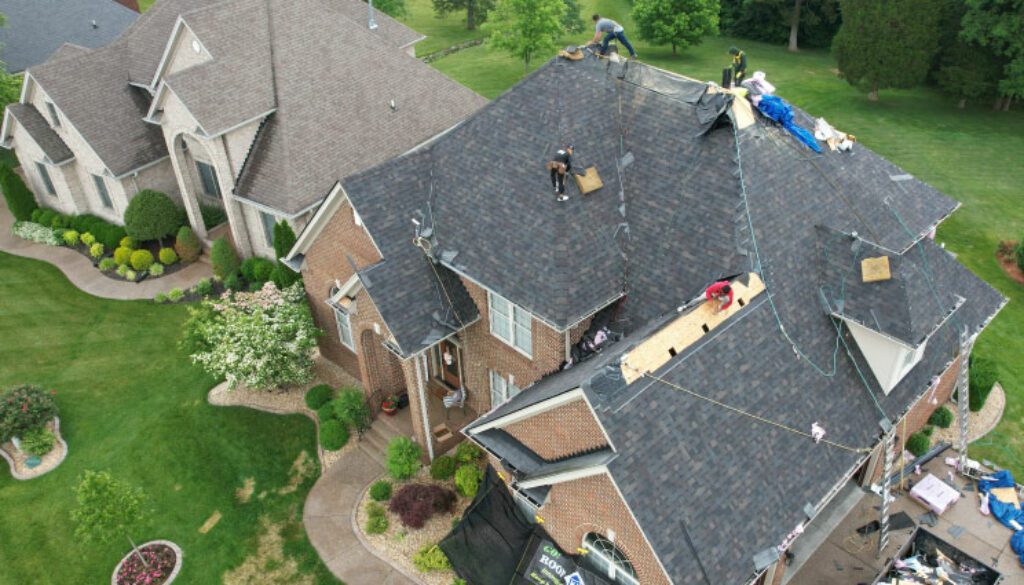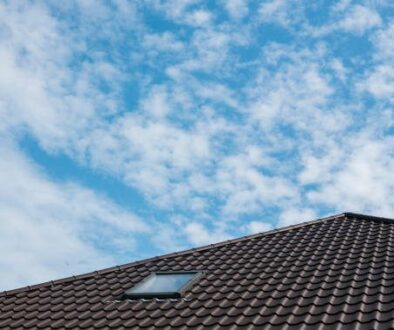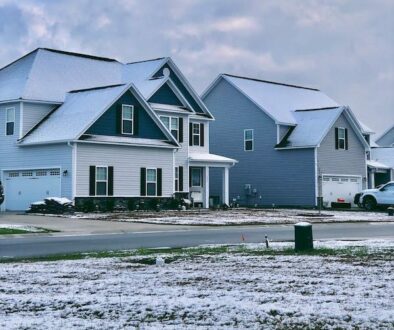Common Things Left Off an Insurance Claim
A dependable roofing system requires much more than shingles. A roofing contractor worth his salt will take into account the worthiness of the underlying roof deck, attic ventilation, flashing, fascia, the water permeability of roof features, the gutter system, the direction of water runoff and much, much more.
Some of these other important elements are commonly left off of estimates provided by insurance carriers. The reason for this is two-fold. First, most insurance adjusters are not roofers. They may only have a rudimentary understanding of the complexities of a well-built roofing system. The second reason is that they were hired by the insurance company to save the insurance company money. This creates a conflict of interests that you can read more about here in our blog. While it’s only expected for insurance companies to look for ways to cut costs, sometimes that is not in your, the homeowner’s, best interests and even may contradict your homeowner’s insurance policy.
That’s why it is important to hire a roofing contractor that not only knows roofing but knows what you are legally entitled to according to your policy. Roof It Right has compiled the following list of some commonly left-off items that we think you should be aware of. This list is by no means exhaustive, but gives you some idea of what should be covered by your policy for storm damage restoration. If any of these items are necessary to restore your roof to its pre-storm condition, Roof It Right will give you the tools and resources needed to communicate with your insurance company in order to “Roof It Right”. After all, if you are going to roof it, go Roof It Right!
Ice and Water Shield
Ice and Water Shield is a waterproof membrane designed to protect vulnerable areas of a roof from ice and water damage and damage from wind-driven rain. It is made of polymer-modified bitumen with an adhesive back surface that allows it to adhere snugly to the roof deck surface.
One of its remarkable features is that it will form a watertight seal around the nails as the shingles are nailed in. This potentially prevents leaks even when high winds blow shingles off.
Low-slope areas are particularly prone to damage from ice dams as well overhangs, edges, and valleys. Without the added protection of ice and water shield, ice dams can force water under the shingles and into the home attic. Read our article on ice dams for more information.
Ice and water shield should be the first underlayment applied in the roof valleys, along the eaves (edges), and around any feature that penetrates the roof such as chimneys, skylights, and vents.
Kentucky Building Code requires ice and water shield in any area of the roof that has a history of ice dams. Shingle manufacturers have the same specifications.
Insurance companies operating in Kentucky often initially deny ice and water shield because they state that “Kentucky does not have a history of ice dams.” As professional roofers that repair ice and water damage to Kentucky roofs on a daily basis, we do not agree with this blanket statement. Often we are able to present documentation that enables the insurance company to acquiesce. At any rate, we strongly recommend ice and water shield installation in Louisville, KY in the roof valleys at the very least.
Landscaping Protection
Part of the charm of your home is its unique landscaping. Perhaps you spent countless hours and countless dollars perfecting your landscaping masterpiece. The bottom line is that when your roofing contractor is done installing your roof, your landscaping should be as healthy and beautiful as it was before the work began. The area should also be clean and nail-free.
Unfortunately, debris and falling shingles are an inevitable part of the reroofing process. A conscientious contractor will have the foresight to make necessary preparations ahead of time to protect the landscaping from fallen tools, debris, and the like.
Roof It Right uses the Catch-All System to protect landscaping around the perimeter of the home as necessary. If there is extensive landscaping or unique layouts that make the Catch-All System inadequate, we will use a lumber and plywood setup.
Logically, landscape protection incurs labor costs that should be passed on to your insurance carrier. Your policy pledges to restore your roof to pre-storm conditions without incurring additional damages to your home. That includes your priceless landscaping. If you have plants around your home, landscape protection should be added to your insurance carrier’s estimate.
Interior repair
Often the first sign of a leak in your roof is damage to the interior. Since the leak in the roof is what led to water damage inside your home, that too should be part of your claim and included on the insurance estimate.
Your policy states that your home should be restored to its original condition before the leak. That includes painting and replacing damaged drywall in such a way that it still matches the undamaged walls in the room as it did before the leak.
Most insurance companies will not volunteer to repair the interior of your home. However, you pay insurance premiums for just such cases and they will pay fair compensation to get it repaired properly if prompted. Roof It Right’s insurance department is here to make sure that you receive fair and proper compensation for interior repairs as well as exterior repairs.
Starter Shingles
Starter shingles are shingles specifically designed to be installed along the edges, or eaves, of your roof. When installed correctly, the use of starter shingles assure the correct position of sealant and joints and protect against wind and water infiltration. Most shingle manufacturers include the use of starter shingles as part of the installation requirements for their products and warranties.
Some insurance carriers initially deny coverage for starter shingles. They say that “left-over” shingles that would normally go to the dumpster, labeled as “waste”, can be used as starter shingles if placed upside down. The only reason to do this would be to save the insurance company money at the policyholder’s expense. It really isn’t the way to roof it right so Roof It Right doesn’t do it.
According to Bert Elliot, Director of Roofing Technical Services at Owens Corning, “The use of waste laminate shingles upside down or a three-tab shingles upside down as a starter is not acceptable. Doing so will place the sealant bead in the wrong location, compromising wind performance at the eave.” You can see the documentation for that here.
So while, yes, an insurance company may initially neglect to include starter shingles in a misguided attempt to save money, no legitimate company can deny that they are indeed a reasonable expense. Roof It Right’s insurance specialists are trained to help you effectively communicate the need for starter shingles to your insurance provider.
Hip and Ridge Shingles
The ridge of a roof is the intersection of the two roof planes at the highest point of your roof, also referred to as the peak. The hip on a roof is the intersection of two roof planes that slope from the peak to the eave. These areas require special shingles that are designed to bend over the point of intersection.
Similar to starter shingles, without the support of a competent roofing contractor, it is common for insurance carriers to initially deny the cost of hip and ridge shingles. They will try to put hip and ridge shingles under the cost of “leftover excess” flat roof shingles. These leftover shingles are referred to as “waste” and come from cutting the shingle strips down to fit the sections of the roof. However, regular shingles are designed to cover a flat surface, not to bend over a ridge, and therefore should not be used as hip and ridge shingles.
According to Bert Elliot, Director of Roofing Technical Services at Owens Corning, “The use of waste laminate shingles as ridge cap is not acceptable. Laminate shingles are designed for installation on a flat surface and will not bend properly over a ridge.” You can see the full documentation for that here.
Hip and ridge shingles are a reasonable and legitimate expense that an insurance carrier will pay for when presented with the proper documentation. Roof It Right’s specialists are happy to provide the documentation that you need to get it roofed right.
Flashing
Flashing is the thin material, usually galvanized steel or other type of metal, used to direct water away from critical areas of the roof. Flashing is used wherever a roof plane meets a vertical surface like a wall or a dormer. Flashing is also used around roof features such as vents, chimneys, and skylights. Water should run down the side of the flashing and be directed onto the shingles so that it doesn’t seep into the roof’s wooden base deck.
Insurance carriers leave this off of their estimate because “there is no direct damage to the flashing.” While this is true in most situations, when you tear off the old roof you must pry, bend, and manipulate the flashing which also has nail holes in it. You’re not going to be able to install the new shingles and reuse the same nail holes on the old flashing, making the old flashing useless. This is why the flashing should be replaced every time.
Insurance companies concur that flashing replacement is a legitimate and reasonable expense that they will cover every time with appropriate communication that we provide for you.
Valley Liner
Building Code requires that the v-shaped dips, or valleys, where two slopes meet be lined with underlayment that meets certain criteria. Standard felt does not meet the criteria so you must add the upgraded protection, be it rolled roofing, Ice and Water shield, metal, or some other approved product.
This building code requirement is often neglected on estimates from insurance carriers. Roof It Right is committed to roofing according to code; our insurance specialists will be sure to catch anything that isn’t code compliant.
Clean-Up
Similar to providing landscape protection, cleaning up after a roofing job can be time consuming and labor intensive. But without proper cleanup, no doubt you’ll agree the job is only half done.
Roof It Right is committed to customer satisfaction, all the way to the clean-up. In addition to keeping the workspace as tidy and clean as possible during working hours, our crews strive to leave the worksite in a safe and clean condition at the end of each day.
It isn’t just a matter of tidiness or preference; it’s a matter of safety which we at Roof It Right take very seriously. Naturally, roofing requires a large amount of nails, from the old ones that need to be removed to the new ones that are installed. Safely removing nails from all areas of the property are a priority especially when kids and pets are in the family. This is done by sweeping the area with a magnet and can be labor intensive when done properly.
Again clean-up is a reasonable part of the expense of repairing or replacing a roof and that expense should be included in your insurance carrier’s estimate. If clean-up was neglected on your estimate, we help you with the process of adding it so that the job can be completed safely.
Gutter Guards/Helmets.
In order to replace the roof, your gutter guards will need to be detached and reset at the very least. Often, they are not in the proper condition to be detached and reset and as a consequence of replacing the roof, they must be replaced. This is what is referred to as consequential damage. The Kentucky Fair Claims Settlement Act and Indiana Fair Claims Settlement Act state that insurance carriers are responsible for such damages.
If your gutter guards can be detached and reset without compromising their integrity, that is the way to go. If not, Roof It Right will document whatever needs to be replaced with photographs and detailed explanations.
Skylights
Skylights must be detached and reset when replacing the roof to maintain the water-tight seal around them. Flashing, the metal material that goes around the skylight where it joins the roof must be replaced. Skylight manufacturers sell flashing kits for their specific products. If the flashing kit for your skylight is no longer available, the whole skylight will have to be replaced with a new kit designed for that particular skylight. This is what is referred to as consequential damages and is covered by your policy. Your policy states that it must pay for whatever it takes to restore your roof to pre-storm condition with no leaks. Remember you are only responsible for your deductible.
It isn’t uncommon for an insurance company to initially deny skylight repairs or replacement as they look for ways to save their company money. However, they are legally responsible for them and we help you present your legitimate case. Usually, the issue is easily resolved. *
Underlayment
Underlayment is typically on the insurance carrier’s estimate, but in many cases, the wrong type is listed. If the pitch is lower than normal, you may need 2 layers of underlayment (also known as felt) or sometimes Ice and Water Shield. If the pitch is steeper, you will need a heavier felt.
Insurance carriers try to deny these supplements, but they are required by building code. Some are safety measures required by OSHA. Roofing is dangerous. Adding code-required underlayments to your estimate will actually save your insurance company money in the long run considering that they lower the risk of death or injury on a roofing job.
Presented with this information, insurance companies easily see the need to adjust their estimate to include appropriate underlayment.
Vents
Like flashing, vents are almost impossible to reuse. Therefore according to code they should be replaced with every roof replacement in order to be done right. ONLY A CHEAP contractor would reuse vents to save money.
*We are professional roofers, not lawyers. The above statements are opinions based on years of experience but do not constitute legal advice. Please consult an attorney for legal advice.


